At last we are thinking to visit the most beautiful country Japan and working to an ultimate Japan travel guide for the ease of tour. Welcome to Japan, the land of the rising sun, where ancient traditions blend seamlessly with modern technology. This fascinating country has a unique culture that is sure to captivate any traveller. Whether you are interested in exploring the bustling metropolis of Tokyo, visiting traditional temples, or relaxing in natural hot springs, Japan has something for everyone.
Japan is a beautiful country with a rich history and culture. From the neon lights of Tokyo to the temples of Kyoto, Japan has something for everyone. Planning a trip to Japan can be overwhelming, but with a little research and preparation, you can have the trip of a lifetime. In this ultimate Japan travel guide, we will provide you with all the information you need to plan your perfect trip to Japan.
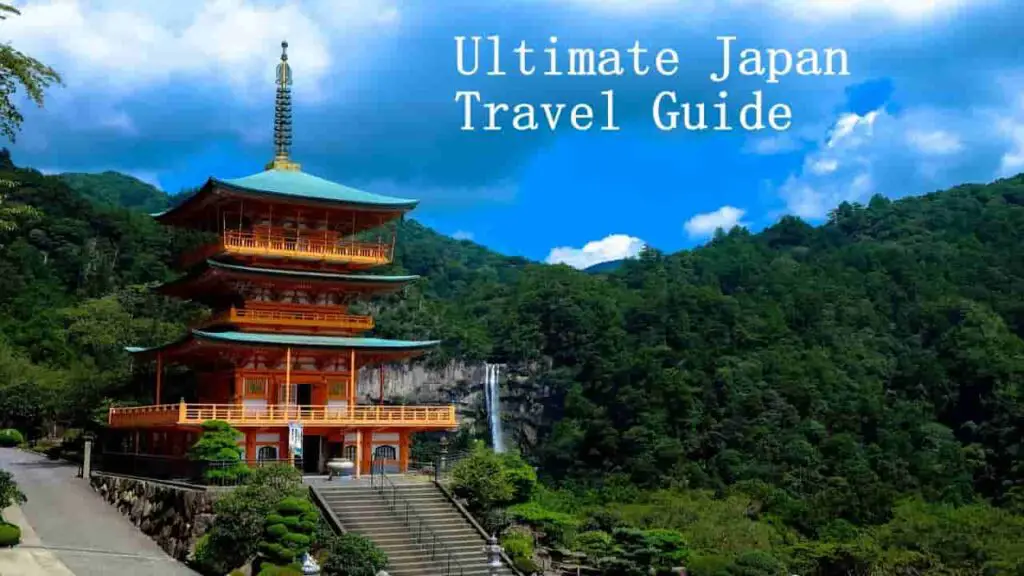
-
Save
Table of Contents
Japan Travel Guide: Well Plan Your Trip to Japan
When to visit Japan
The best time to visit Japan is during the spring (March to May) or autumn (September to November) when the weather is mild and the scenery is beautiful. However, this is also peak tourist season, so prices can be higher and popular destinations can be crowded. If you want to avoid the crowds, consider visiting Japan during the winter (December to February) or summer (June to August).
How to get to Japan
Japan is easily accessible by air, with many international airlines flying to Tokyo and other major cities. Tokyo’s Narita International Airport and Haneda International Airport are the busiest airports in Japan. If you’re traveling from neighboring countries like South Korea or China, you can also take a ferry or a train to Japan.
Visa requirements
Most visitors to Japan do not need a visa for stays of up to 90 days. However, you will need a valid passport and return ticket to enter Japan. If you are unsure about your visa requirements, check with your nearest Japanese embassy or consulate.
Places to Visit Japan
Tokyo
Tokyo is Japan’s capital and largest city, known for its bright lights, bustling streets, and delicious food. Some of the must-see attractions in Tokyo include:
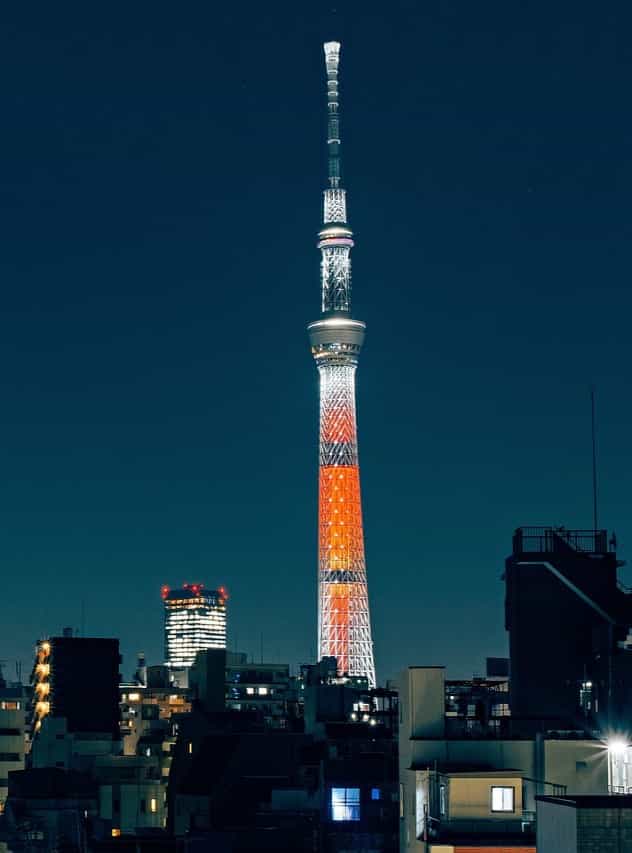
-
Save
- the Tokyo Tower,
- the Imperial Palace, and
- the famous Shibuya Crossing.
You can also explore traditional neighborhoods like Asakusa and visit the Meiji Shrine. Let us see Sightseeing in Tokyo:
- Shibuya Crossing: Shibuya Crossing is one of the busiest intersections in the world, and a popular spot for taking photos and people-watching.
- Tokyo Skytree: The Tokyo Skytree is the tallest tower in the world and offers spectacular views of the city.
- Tsukiji Fish Market: Tsukiji Fish Market is the largest fish market in the world and a must-visit for seafood lovers.
- Sensoji Temple: Sensoji Temple is Tokyo’s oldest temple and a popular tourist attraction. It features a colorful gate and a bustling shopping street.
Kyoto
Kyoto is Japan’s cultural capital, famous for its temples, shrines, and traditional architecture. Some of the top attractions in Kyoto includes:
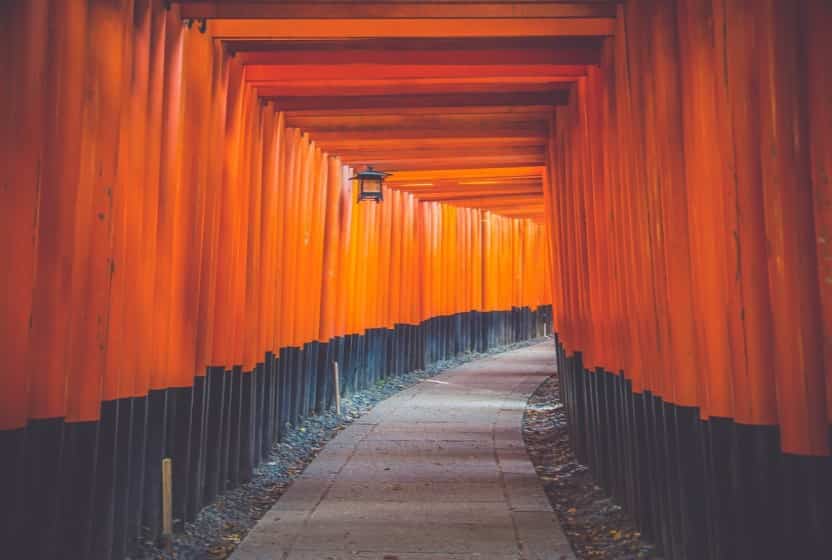
-
Save
- the Fushimi Inari Shrine,
- the Kiyomizu-dera Temple, and
- the Arashiyama Bamboo Grove.
Don’t forget to try some Kyoto-style cuisine like kaiseki, a traditional multi-course meal. let us see the Sightseeing in Kyoto:
- Fushimi Inari Shrine: Fushimi Inari Shrine is a stunning shrine dedicated to the god of rice and sake. It is famous for its thousands of torii gates that line a path up a mountain.
- Kinkakuji Temple: Kinkakuji Temple, also known as the Golden Pavilion, is a beautiful temple covered in gold leaf. It is surrounded by a tranquil pond and a serene garden.
- Gion District: The Gion District is a historic district in Kyoto known for its traditional architecture and geisha culture.
Osaka
Osaka is Japan’s second-largest city, known for its vibrant nightlife and delicious food. Some of the top attractions in Osaka includes:
- Osaka Castle,
- Dotonbori district,
- Universal Studios Japan theme park.
Osaka is also a great place to try local dishes like takoyaki (octopus balls) and okonomiyaki (savory pancakes).
Hiroshima
Hiroshima is a city with a tragic past but has since become a symbol of hope and peace. The Hiroshima Peace Memorial Park and Museum is a must-visit to learn about the atomic bombing that occurred during World War II.
You can also visit the Itsukushima Shrine, located on the island of Miyajima, which is known for its “floating” torii gate.
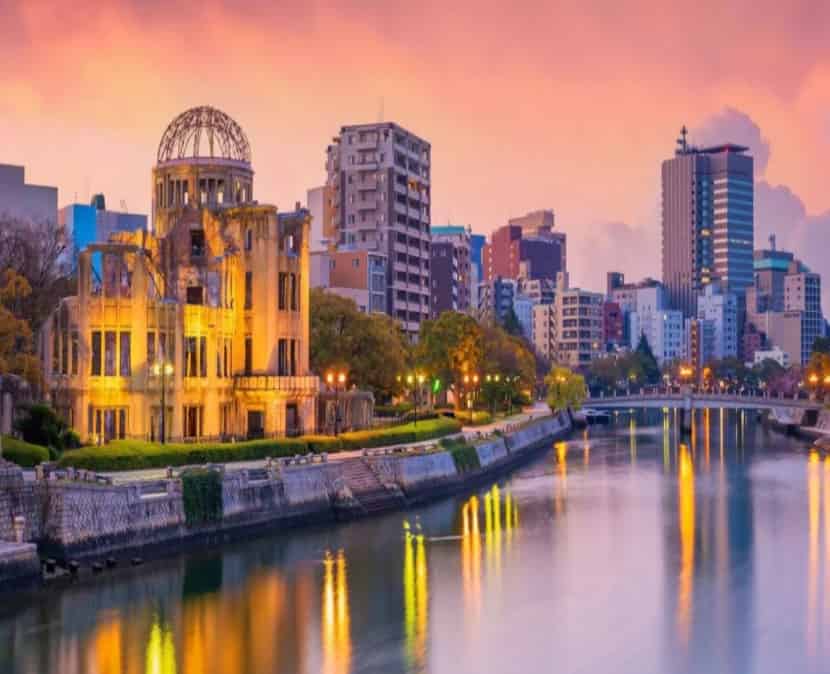
-
Save
Mount Fuji
Mount Fuji is Japan’s highest mountain and a symbol of Japan. You can climb the mountain during the climbing season (July to September) or admire it from afar.
The Fuji Five Lakes region is a popular destination to enjoy the view of the mountain and to experience the natural beauty of the area.
Best Time to Visit Japan
Best time to visit Japan
Japan is a year-round destination, but the best time to visit depends on your interests and preferences.
- If you want to see the famous cherry blossoms, you should visit Japan in the spring (March to May).
- The autumn months (September to November) are also popular for their stunning fall foliage.
- For winter sports enthusiasts, the months of December to February are ideal.
Things to Do in Japan
Visit temples and shrines
Japan is known for its beautiful temples and shrines. Some of the most famous include the Senso-ji Temple in Tokyo, the Kinkaku-ji Temple in Kyoto, and the Itsukushima Shrine in Hiroshima. Be respectful when visiting these sites and follow the proper etiquette.
Try Japanese food
Japanese food is delicious and varied. Some of the most popular dishes include sushi, ramen, tempura, and yakitori. Be sure to try local specialties like okonomiyaki in Osaka and Hiroshima-style okonomiyaki in Hiroshima.
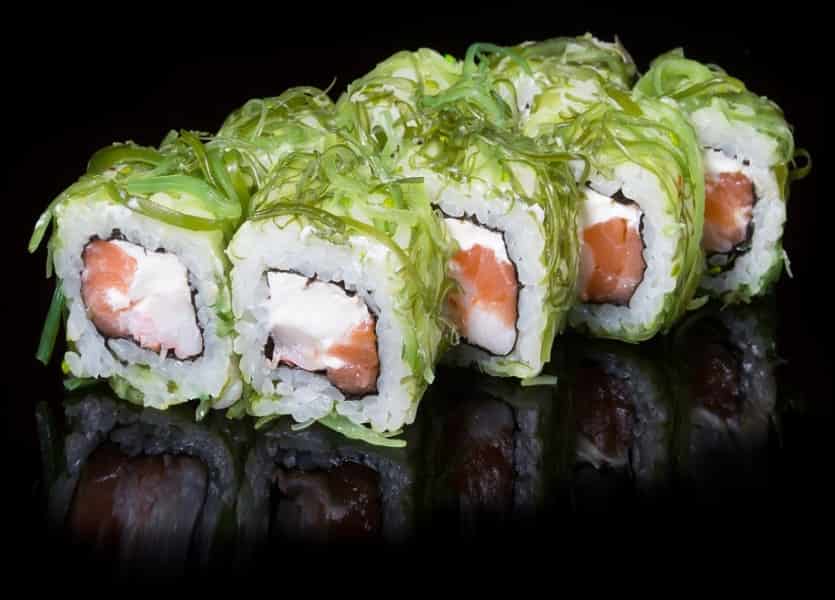
-
Save
Experience a traditional tea ceremony
The Japanese tea ceremony is a cultural experience that involves preparing and serving green tea in a traditional setting. You can experience a tea ceremony in many places throughout Japan, including tea houses and cultural centers.
Attend a sumo wrestling match
Sumo wrestling is Japan’s national sport and a unique cultural experience. Tournaments are held six times a year in different locations throughout Japan. Tickets can be purchased in advance or at the venue on the day of the match.
Shop for souvenirs
Japan is famous for its high-quality and unique souvenirs. Some popular items include Japanese ceramics, stationery, and traditional clothing like yukata and kimono. Don’t forget to visit the 100 yen stores for affordable and quirky items.
Accommodation in Japan
Hotels
Japan has a wide range of hotels to suit all budgets. From luxury hotels to budget-friendly options, you can find something that fits your needs. Some popular hotel chains in Japan include the APA Hotel, the Capsule Hotel, and the Hotel Monterey.
Ryokans
Ryokans are traditional Japanese inns that offer a unique cultural experience. Guests sleep on futons on tatami mats and are served traditional meals. Some ryokans also have hot springs (onsen) for guests to enjoy.
Capsule hotels
Capsule hotels are a unique type of accommodation that is popular among budget travelers. Guests sleep in small capsules that are equipped with basic amenities like a TV and a small storage space.
Transportation in Japan
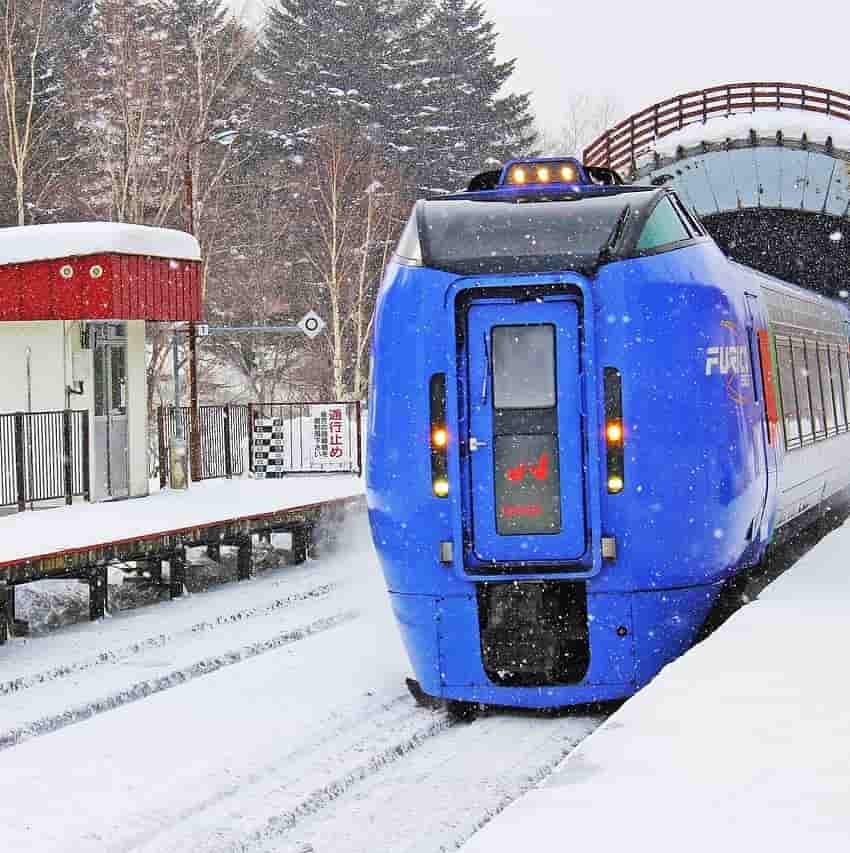
-
Save
Trains
Japan’s train system is efficient and reliable, making it easy to travel throughout the country. The Shinkansen (bullet train) is a popular way to travel between major cities, and local trains and subways are available in most cities.
Buses
Buses are another option for traveling around Japan, especially for more remote areas. You can purchase bus tickets in advance or at the bus station.
Taxis
Taxis are available in most cities in Japan, but they can be expensive. Make sure to have the address of your destination written in Japanese to show the taxi driver.
Culture and customs in Japan
Bowing
Bowing is an important custom in Japan and is used to show respect and gratitude. When meeting someone for the first time or thanking someone, a bow is appropriate. The depth and length of the bow depend on the situation and the relationship between the parties involved.
Removing shoes
In Japan, it is customary to remove shoes before entering someone’s home or a temple. Be sure to wear clean socks and avoid wearing shoes with holes or scuffs.
Eating etiquette
When eating in Japan, it is important to use chopsticks properly and to not play with them. Also, slurping noodles is considered polite and a way to show appreciation for the food.
Onsen etiquette
When visiting an onsen (hot spring), it is important to follow proper etiquette. Be sure to wash thoroughly before entering the hot springs, do not wear clothing in the hot springs, and do not soak if you have an open wound.
Gift-giving
Gift-giving is a common practice in Japan and is often used to show appreciation or to apologize. Be sure to wrap gifts nicely and to give gifts in even numbers (odd numbers are associated with funerals).
Japanese Customs and Traditions
Bowing
Bowing is an important part of Japanese etiquette. It is a way to show respect and gratitude to others. There are different types of bows, each with its own meaning. A slight bow with a nod of the head is used in casual situations, while a deeper bow with hands on thighs is used in formal situations.
Gift-giving
Gift-giving is an important aspect of Japanese culture. It is a way to express appreciation and build relationships. Gifts should be wrapped beautifully, and the act of giving and receiving should be done with both hands. Gifts should also be of good quality, but not too expensive, as it is considered impolite to give a gift that is too lavish.
Business etiquette
Japan has a unique business culture that emphasizes politeness and respect. In business meetings, it is important to arrive on time, exchange business cards, and make a good first impression. It is also important to speak in a respectful tone and avoid interrupting others.
Tea Ceremony
The tea ceremony, or chanoyu, is a traditional Japanese ritual that involves the preparation and presentation of matcha, a powdered green tea. The tea ceremony is an important part of Japanese culture, emphasizing respect, tranquility, and mindfulness.
Cherry blossom viewing
Cherry blossom viewing, or hanami, is a traditional Japanese custom that takes place in the spring. It is a time to appreciate the beauty of the cherry blossoms and enjoy the company of friends and family.
New Year’s traditions
New Year’s is one of the most important holidays in Japan. It is a time to reflect on the past year and look forward to the new one. Japanese people celebrate New Year’s with various traditions, including cleaning their homes, visiting temples and shrines, and eating special foods such as mochi
Japanese Festivals
Japan is known for its vibrant and colorful festivals, each with their own unique traditions and customs. Here are some of the most popular festivals in Japan:
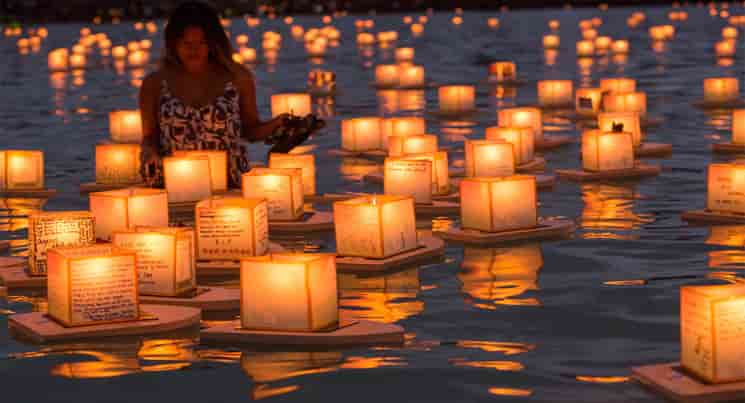
-
Save
Obon Festival
The Obon Festival is a time to honor one’s ancestors and is usually held in August. During this festival, people light lanterns and place them in rivers to guide the spirits of their ancestors back to the afterlife.
Tanabata Festival
The Tanabata Festival is held in July and celebrates the story of two lovers who were separated by the Milky Way. During this festival, people write their wishes on colorful strips of paper and hang them on bamboo trees.
Gion Festival
The Gion Festival is one of the most famous festivals in Japan and is held in Kyoto in July. The festival features elaborate floats and traditional Japanese music and dancing.
Shichi-Go-San Festival
The Shichi-Go-San Festival is held in November and celebrates the growth and well-being of children. Children aged three, five, and seven are dressed in traditional clothing and taken to shrines to pray for their health and happiness.
Setsubun Festival
The Setsubun Festival is held in February and marks the beginning of spring. During this festival, people throw roasted soybeans to ward off evil spirits and bring good luck for the coming year. Japanese Food and Drink.
Japanese Food and Drink
Japanese cuisine is famous for its fresh ingredients and unique flavors. Here are some of the most popular Japanese foods and drinks:
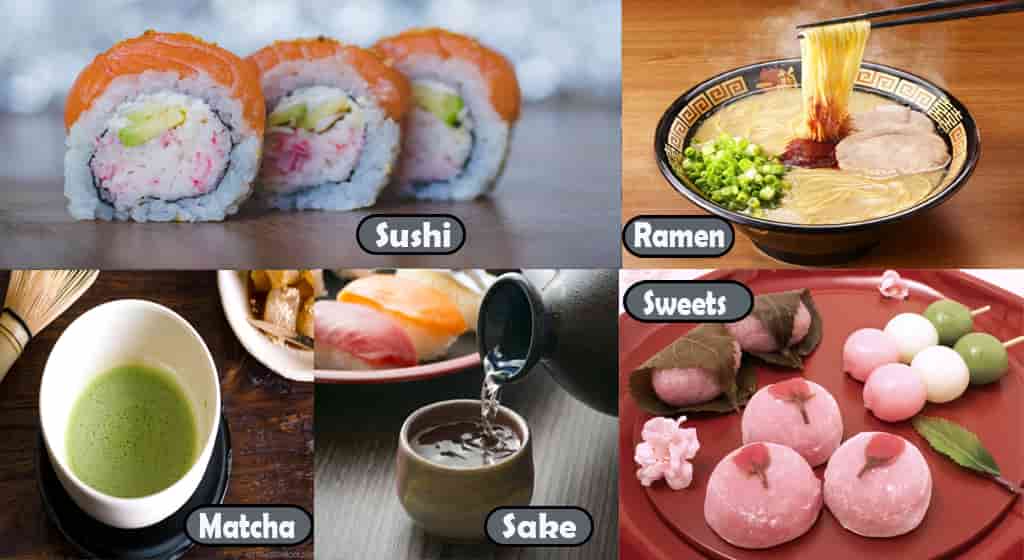
-
Save
- Sushi: Sushi is a type of Japanese cuisine that involves raw fish and rice wrapped in seaweed. It is usually served with soy sauce, wasabi, and pickled ginger.
- Ramen: Ramen is a popular noodle dish in Japan that consists of wheat noodles served in a meat or fish-based broth, often flavored with soy sauce or miso paste.
- Matcha: Matcha is a powdered green tea that is used in the Japanese tea ceremony. It is also used in various desserts and drinks.
- Sake: Sake is a Japanese alcoholic beverage made from fermented rice. It is typically served at room temperature or slightly warmed.
- Japanese sweet: Japanese sweets, or wagashi, are a type of traditional Japanese confectionery. They are usually made with mochi, sweet bean paste, or fruit.
Art and Architecture
Japanese art and architecture are known for their elegance, simplicity, and attention to detail. Here are some of the most famous forms of Japanese art and architecture:
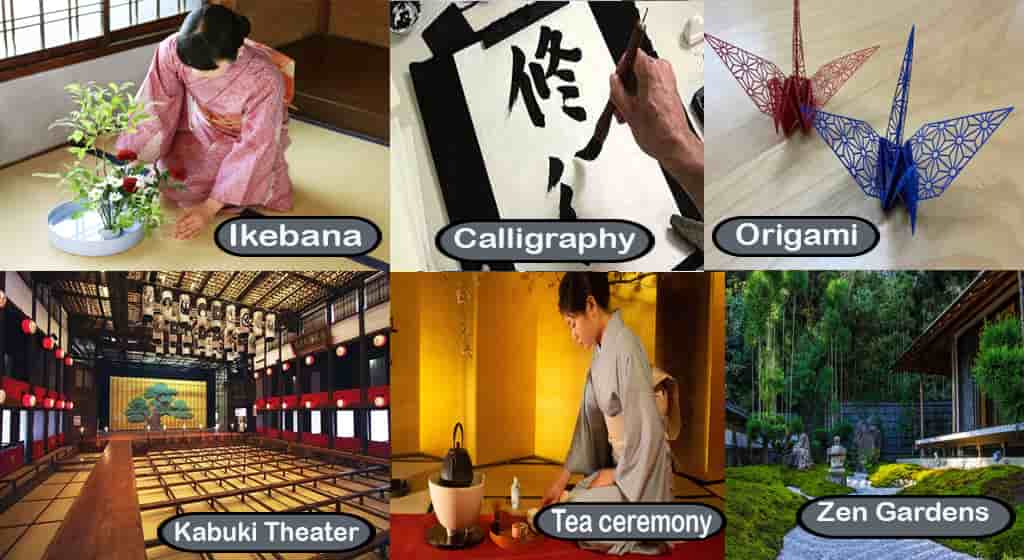
-
Save
- Ikebana: Ikebana is the art of Japanese flower arrangement. It emphasizes simplicity and natural beauty, with each arrangement designed to convey a specific feeling or message.
- Calligraphy: Japanese calligraphy, or shodo, is a form of art that involves the creation of beautiful characters using a brush and ink. It is used in various forms of Japanese art, including painting, pottery, and architecture.
- Kabuki Theater: Kabuki is a traditional form of Japanese theater that features elaborate costumes, makeup, and stage settings. It often tells stories of historical or mythological significance.
- Origami: Origami is the art of paper folding. It is a popular pastime in Japan and is often used in various forms of art and decoration.
- Tea ceremony: The Japanese tea ceremony, or chanoyu, is a traditional ritual that involves the preparation and presentation of matcha, a powdered green tea. It emphasizes simplicity, harmony, and respect for others.
- Zen Gardens: Zen gardens, or karesansui, are Japanese rock gardens that are designed to promote meditation and relaxation. They are often made with sand or gravel, with carefully arranged rocks and plants.
Useful Japanese phrases
- Hello – Konnichiwa
- Thank you – Arigatou gozaimasu
- Excuse me – Sumimasen
- Where is…? – …wa doko desu ka?
- How much? – Ikura desu ka?
Conclusion
Japan is a fascinating country with a rich culture and history. From its bustling cities to its serene natural landscapes, there is something for everyone in Japan.
By following proper etiquette and taking advantage of the country’s efficient transportation system, you can have a memorable and enjoyable trip. Don’t forget to try the delicious food, visit temples and shrines, and shop for unique souvenirs.
Frequently Asked Questions for Travel in Japan
The best time to visit Japan depends on your preferences. The cherry blossom season (late March to early April) and the fall foliage season (late October to early December) are popular times to visit for their natural beauty.
Yes, Japan is generally a safe country for solo travellers. However, it is always important to be aware of your surroundings and to take appropriate precautions.
It depends on your nationality. Some countries have visa exemptions for short-term visits, while others require a visa. Check with your local embassy or consulate for more information.
While many Japanese people can understand basic English, it is not widely spoken. It is helpful to learn some basic Japanese phrases before your trip.
The cherry blossom, or sakura, is a symbol of beauty, renewal, and the fleeting nature of life in Japanese culture. Its short bloom period is celebrated with hanami, or cherry blossom viewing parties.
The Japanese tea ceremony is a symbol of hospitality, respect, and tranquility in Japanese culture. It emphasizes the importance of mindfulness and connection with others.
Some popular sports in Japan include baseball, sumo wrestling, judo, karate, and kendo.
The traditional Japanese dress is called a kimono. It is a long, flowing garment made of silk or other fine fabrics and is often worn on special occasions.
-
Save

